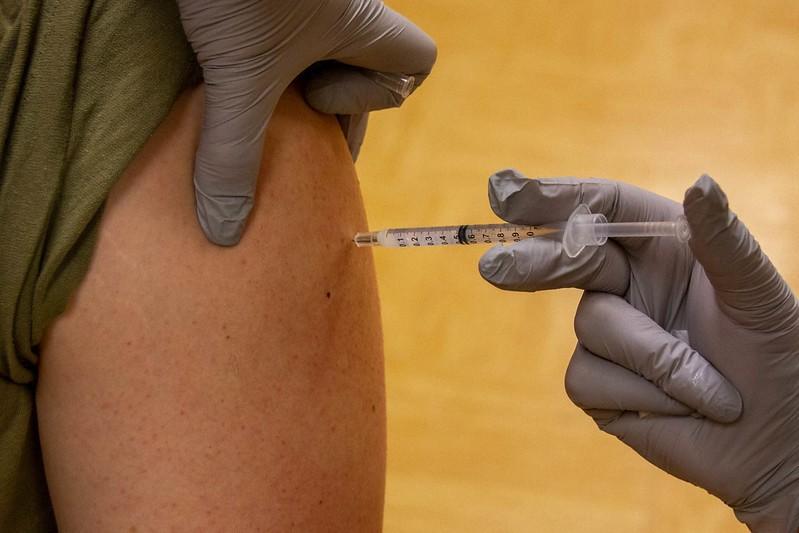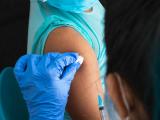Recipients of the bivalent (two-strain) COVID-19 vaccine booster were 14 times less likely to die of Omicron BA.4/BA.5 infections than their unvaccinated peers and 5 times less likely to die than recipients of the monovalent (single-strain) booster, particularly among older people, finds a study today in Morbidity and Mortality Weekly Report.
Researchers from the Centers for Disease Control and Prevention (CDC) led the study of people aged 12 years and older in 24 US jurisdictions from Oct 3, 2021, to Dec 24, 2022. They used case-surveillance, vaccination, and death data to compare infection and death rates in vaccinated and unvaccinated people by receipt of and time since a monovalent or bivalent booster during the Delta variant era and late BA.4/BA.5 predominance.
The bivalent booster contains an additional BA.4/BA.5 spike protein component for better protection against those subvariants.
Protection highest in older adults
A total of 21,296,326 COVID-19 cases and 115,078 related deaths were reported during the study period. Average weekly age-standardized incidence and death rates rose substantially during the Omicron BA.1 wave and, to a lesser extent, during the early BA.4/BA.5 period.
In all periods, average weekly infection and death rates were higher among unvaccinated people (ranges, 216.1 to 1,256.0 and 1.6 to 15.8, respectively) than among monovalent booster-only recipients (ranges, 86.4 to 487.7 and 0.3 to 1.4, respectively). Cases and deaths during the late BA.4/BA.5 period were lowest among bivalent booster recipients (78.5 and 0.1, respectively).
Overall, case rate ratios (RRs) for unvaccinated versus monovalent-only vaccine recipients decreased from 4.0 during Delta to 2.6 during BA.1 and 1.8 during BA.2 before climbing to 2.7 in early BA.4/BA.5. Case RRs for unvaccinated versus bivalent booster recipients were slightly higher (2.8) than those for monovalent-only vaccine recipients (2.5) during late BA.4/BA.5.
Average death RRs in monovalent-only vaccine recipients declined from Delta (16.2) to BA.1 (11.5) and then leveled off during BA.2 (5.3), early BA.4/BA.5 (5.3), and late BA.4/BA.5 (5.4). Death rates among unvaccinated people were 14.1 times those of bivalent vaccine recipients and 2.6 times higher among monovalent-only vaccine recipients than among bivalent vaccine recipients during late BA.4/BA.5.
Relative to that of unvaccinated people, protection among bivalent booster recipients aged 65 to 79 years (RR, 23.7) and those 80 and older (RR,10.3) was significantly higher than that among monovalent booster recipients aged 65 to 79 (RR, 8.3) and 80 and older (RR, 4.2).
Staying current with vaccines
Death rates among older, unvaccinated adults were significantly higher than among those who had received a bivalent booster (RR for 65 to 79 years, 23.7; RR for 80 or older, 10.3) or a monovalent booster (RRs, 8.3 and 4.2, respectively).
A secondary analysis stratified by time since booster receipt showed that death rates progressively fell from the Delta wave (RR, 50.7) to the early BA.4/BA.5 period (RR, 7.4) among unvaccinated people compared with those who had received a monovalent booster in the past 2 weeks to 2 months.
In the early BA.4/BA.5 period, declines in relative death rates were seen 6 to 8, 9 to 11, and 12 or more months after monovalent booster receipt (RRs, 4.6, 4.5, and 2.5, respectively). In the late BA.4/BA.5 period, bivalent boosters increased protection against death 2 weeks and 2 months after receipt (RR, 15.2).
"In both analyses, when compared with unvaccinated persons, persons who had received bivalent boosters were provided additional protection against death over monovalent doses or monovalent boosters," the authors wrote. "Restored protection was highest in older adults."
Noting that only 17.5% of Americans aged 12 and older have received a bivalent booster, the researchers said that all eligible people should stay up to date on recommended boosters.
Persons who had received bivalent boosters were provided additional protection against death over monovalent doses or monovalent boosters
The study authors conclude, "Continued monitoring of the impact of emerging variants on [vaccine effectiveness] against severe COVID-19 outcomes is needed."




















